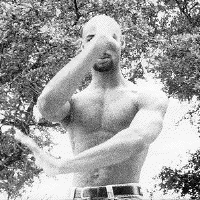|
The Call of the Berimbau |
 |
|
by Damon Stith
What is Capoeira? This is a common question asked by both participants and spectators of this exotic import from Brazil. Capoeria is part folk-dance, part game, and part martial art. But the essence of what Capoeira really is remains elusive.
What seems to get lost in all the debate about defining Capoeira is that it makes very strong political statements about the oppressive Brazilian society in which it was developed. Since its beginning, Capoeria has faced oppression. It has endured both the persecution of its practitioners and general disregard for its cultural importance.
It is not surprising that the philosophy behind Capoeira is rooted in deception. There is a saying that goes, "Never trust a Capoeirista." In fact, a Capoeirista is taught to expect a double-cross at any moment during a jogo (a game or match). This kind of teaching reflects the harsh injustices that the oppressed faced daily. Traditionally, the Capoeirista was a street-smart rogue whose passion for fighting was balanced by his poetic heart and troubadour qualities. Capoeiristas' only companions were their fellow Capoeiristas, because they had also answered the call of the berimbau and of life.
Why do we believe Capoeira can do this for children? First of all, Capoeria is in a format that children can easily understand: music and dance. Secondly, Capoeria emphasizes community and cooperation. For example, although most people recognize Capoeria by its breathtaking acrobatics or its spectacular exhibitions of strength, Capoeira is not complete without a roda (a ring of people where Capoeria is played) and the sounds of the berimbau (a musical bow), the drums, and singing.
Through Capoeria, American youth are offered a dance-driven vehicle for relating to the struggles of the black people who invented the form. Apart from its physical benefits, Capoeira is rich in history and traditions rooted in Africa. As an art, Capoeira can bring people of diverse backgrounds together because it speaks to us in the ancient language of community and shared suffering. |
||
top | this issue | ADA home |
||
 Capoeira Da Rua (the school), focuses on the fighting aspect of the art and its African roots. We walk the delicate balance between an effective martial art and a rich Afro-Diasporic cultural expression. For us, Capoeira can be used to offer children a sense of pride and self-worth.
Capoeira Da Rua (the school), focuses on the fighting aspect of the art and its African roots. We walk the delicate balance between an effective martial art and a rich Afro-Diasporic cultural expression. For us, Capoeira can be used to offer children a sense of pride and self-worth.